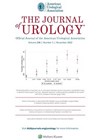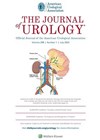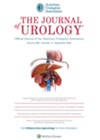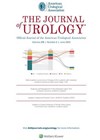
Journal Reviews archive for July 2023
Synthetic mid-urethral slings for stress incontinence in neurogenic LUTD
Neurogenic lower urinary tract dysfunction (NLUTD) is heterogeneous because of the multiplicity of underlying causes and mechanisms. In women with NLUTD, stress urinary incontinence may be due to intrinsic sphincter deficiency caused by the neurological disease itself or from sphincter...
Fluoxetine for refractory night wetting in children – is it safe and effective?
Around 1-2% of teenagers above the age of 15 years and 2-6% of adults continue to wet the bed. Standard treatment often includes bladder advice, alarm therapy, desmopressin and anticholinergics. Tricyclic antidepressants (imipramine) can also be utilised. Unfortunately, most have...
Robot-assisted ureterocalicostomy
Ureterocalicostomy was first introduced by Neuwirt (1947) and further described by Jameson et al. (1957) as an alternative procedure for repair of pelviureteric junction (PUJ) obstruction associated with an intrarenal pelvis. Performing ureterocalicostomy for PUJ repair has been suggested in...
Scrotal antegrade sclerotherapy for the adolescent varicocele
The incidence of varicocele in adolescent males is around 15%. Treatment indications include symptoms (pain) and evidence of a smaller testis. Numerous surgical techniques are described but there is a lack of randomised controlled trials (RCT), specifically in adolescents. This...
Stenting prior to URS or ESWL – does it increase ED visits and opiate prescriptions?
Ureteral stents are used to bypass obstructive stones, to dilate the ureter in order to facilitate ureteroscopy (URS), and to maintain patency / low intrarenal pressure following stone surgery. However, there can be morbidity (pain / voiding symptoms). Tasian et...








